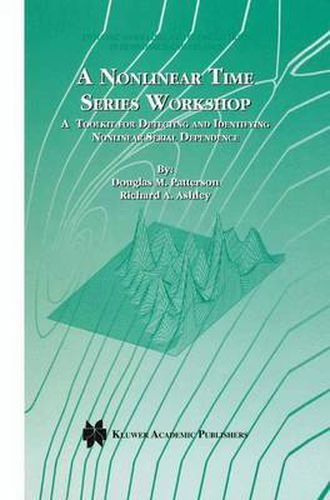Readings Newsletter
Become a Readings Member to make your shopping experience even easier.
Sign in or sign up for free!
You’re not far away from qualifying for FREE standard shipping within Australia
You’ve qualified for FREE standard shipping within Australia
The cart is loading…






This title is printed to order. This book may have been self-published. If so, we cannot guarantee the quality of the content. In the main most books will have gone through the editing process however some may not. We therefore suggest that you be aware of this before ordering this book. If in doubt check either the author or publisher’s details as we are unable to accept any returns unless they are faulty. Please contact us if you have any questions.
The analysis ofwhat might be called dynamic nonlinearity in time series has its roots in the pioneering work ofBrillinger (1965) - who first pointed out how the bispectrum and higher order polyspectra could, in principle, be used to test for nonlinear serial dependence - and in Subba Rao and Gabr (1980) and Hinich (1982) who each showed how Brillinger’s insight could be translated into a statistical test. Hinich’s test, because ittakes advantage ofthe large sample statisticalpropertiesofthe bispectral estimates became the first usable statistical test for nonlinear serial dependence. We are forever grateful to Mel Hinich for getting us involved at that time in this fascinating and fruitful endeavor. With help from Mel (sometimes as amentor,sometimes as acollaborator) we developed and applied this bispectral test in the ensuing period. The first application ofthe test was to daily stock returns {Hinich and Patterson (1982, 1985)} yielding the important discovery of substantial nonlinear serial dependence in returns, over and above the weak linear serial dependence that had been previously observed. The original manuscript met with resistance from finance journals, no doubt because finance academics were reluctant to recognize the importance of distinguishing between serial correlation and nonlinear serial dependence. In Ashley, Patterson and Hinich (1986) we examined the power and sizeofthe test in finite samples.
$9.00 standard shipping within Australia
FREE standard shipping within Australia for orders over $100.00
Express & International shipping calculated at checkout
This title is printed to order. This book may have been self-published. If so, we cannot guarantee the quality of the content. In the main most books will have gone through the editing process however some may not. We therefore suggest that you be aware of this before ordering this book. If in doubt check either the author or publisher’s details as we are unable to accept any returns unless they are faulty. Please contact us if you have any questions.
The analysis ofwhat might be called dynamic nonlinearity in time series has its roots in the pioneering work ofBrillinger (1965) - who first pointed out how the bispectrum and higher order polyspectra could, in principle, be used to test for nonlinear serial dependence - and in Subba Rao and Gabr (1980) and Hinich (1982) who each showed how Brillinger’s insight could be translated into a statistical test. Hinich’s test, because ittakes advantage ofthe large sample statisticalpropertiesofthe bispectral estimates became the first usable statistical test for nonlinear serial dependence. We are forever grateful to Mel Hinich for getting us involved at that time in this fascinating and fruitful endeavor. With help from Mel (sometimes as amentor,sometimes as acollaborator) we developed and applied this bispectral test in the ensuing period. The first application ofthe test was to daily stock returns {Hinich and Patterson (1982, 1985)} yielding the important discovery of substantial nonlinear serial dependence in returns, over and above the weak linear serial dependence that had been previously observed. The original manuscript met with resistance from finance journals, no doubt because finance academics were reluctant to recognize the importance of distinguishing between serial correlation and nonlinear serial dependence. In Ashley, Patterson and Hinich (1986) we examined the power and sizeofthe test in finite samples.